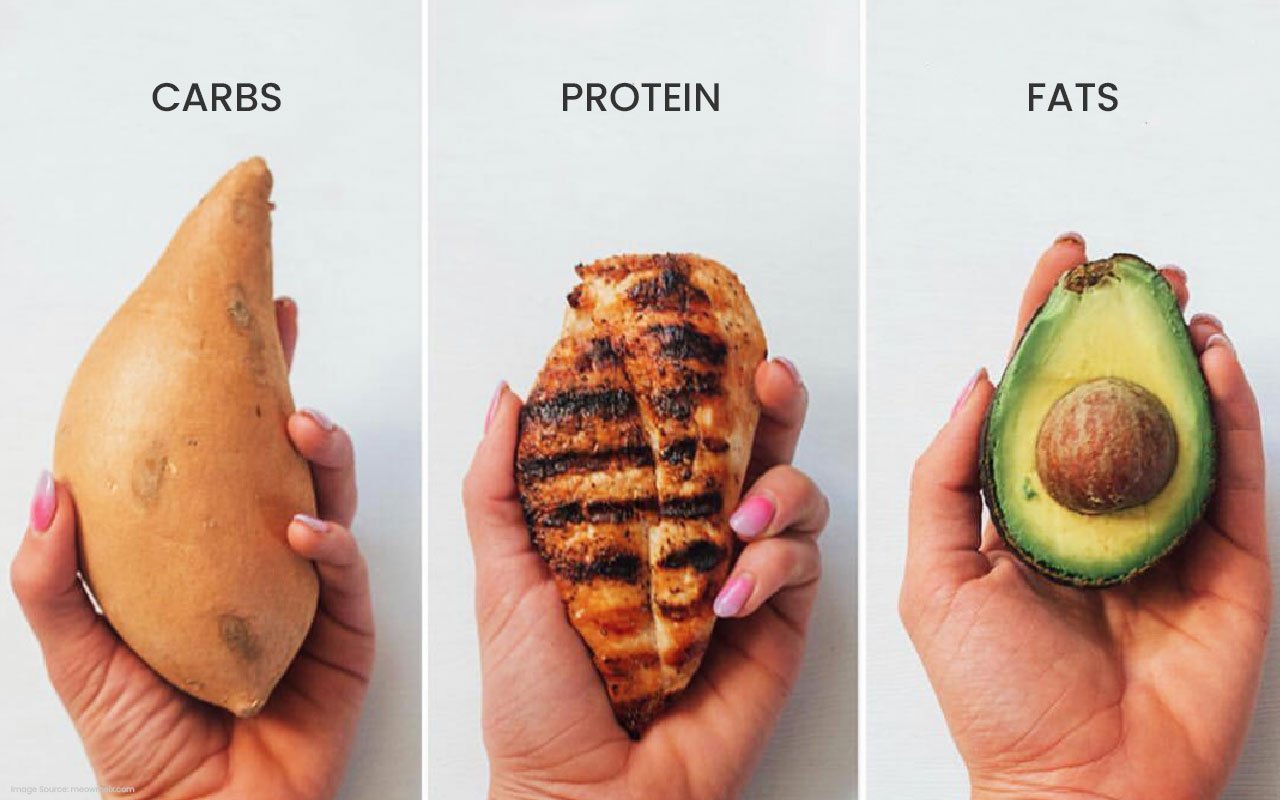
Do you miss your summer body? With these strategies to keep shredded for the long term, you can make that lean form a year-round staple.
During the cold and chilly days of the year, people want to hide beneath clothes and jackets. However, there’s no need to go all-in at once you may continue shredding even after the sun goes down in the colder months.
Win the battle against winter by using these simple tactics to help you keep the pounds off as time goes on.
Try adding foods such as grapefruit, cinnamon, and asparagus to your diet to burn fat and stay lean all year round.
1. Ditch The Excuses

People often use bad weather to give up on their fitness and health to lean. However, as the saying goes in the military, “rain won’t harm you; but bullets will!” Don’t let a little slush deter you. Make yourself bulletproof at the gym, regardless of what lands from the sky.
Also, make a clear distinction between being tired and being inactive. When I’m not inspired, I ask myself if I’m exhausted or if I’m being lazy. I’ll take a day off to recuperate if I’ve trained until I’m tired. After all, recovery is necessary when you’re trying to maintain your ripped physique since your body will need time to repair.
However, if I am slacking off, I recall that no one has ever regretted doing a workout, and I drag my butt to the gym. It’s o.k. if you can’t give 100 percent effort every time you go to the gym; the worst exercise is the one that didn’t happen.
The most famous reasons for making excuses all boil down to being bored. When I’m ready to relax instead of working, I ask myself whether I’ve completed my usual routine enough. Changing the variables of your routine, such as rep range, frequency, body-part pairings, rest periods, and tempo, can refresh your workout. When you begin the year with physical activity, you’ll be more inclined to work out in January than in July.
Whether you want to get up early to work out, make deliberate choices about your diet, or commit to training at a particular time during the day, it’s critical to keep up your excellent behaviors throughout the summer. If you keep to your guns, you’ll be thinner.
2. Keep Up The Cardio

Maintaining a consistent cardio program throughout the year allows you to have a more flexible diet. Now, I’m not suggesting going completely crazy with your food choices, but adding more activity to your routine may allow you to play around a little more with your diet.
You can do whatever cardio you want, but I enjoy going for a morning stroll. If you wish to exercise for at least 75 minutes a few times each week, this is an easy activity I can easily add into my routine to get my heart rate up.
I also enjoy doing high-intensity interval training (HIIT) on the treadmill from time to time. For ten rounds, I set the treadmill belt to 11 mph and do 30 seconds on and 30 seconds rest 10 times. HIIT is beneficial for fat loss, particularly when you have a limited amount of time but want to include intensity. Make sure you pick a type of exercise that you enjoy so that you’ll be committed to it all year, rather than just during the summer. If you can squeeze in two or three sessions each week, you’ll be able to keep that summer shred for a little longer!
3. Track Your Macros

It’s essential to understand what, how much, and when to eat to keep your summer physique all year. If you switch from weighing grams, milliliters, and ounces to simply estimating two tablespoons of peanut butter and teaspoons of dressing, you’ll almost certainly return to malnourished patterns. If you don’t know what’s going into your body, it’s nearly impossible to change your diet to achieve your objectives and stay lean.
I check my protein, carbohydrate, and fat intake regularly to ensure I’m always correct. That way, I can make changes as needed. I try to maintain about 80% of my weekly food intake, taking some time off to enjoy life and be a person. If you are consistent 80% of the time, you can afford to be less rigorous about the other 20 percent. It also enables me to keep my figure for months on end.
4. Eat Properly Around Your Training

It’s also critical to eat enough before and after a workout to stay lean. This is the point where a lot of individuals fall. If they don’t eat enough calories before a workout or do not replace carbohydrates and other nutrients lost during exercise after the fact, they won’t be able to keep going.
I eat breakfast before I train, so it’s my pre-workout meal. I’m a morning bird, so I’ll eat oatmeal with almond milk, a spoonful of peanut butter and cinnamon, and a Grenade Hydra 6 protein shake about two to three hours before working out. I usually advise consuming protein before exercise—carbs, fat, or both—to enhance recovery and performance. This will not only provide you with energy throughout your exercise, but it’ll also aid in the muscle healing and recovery process.
Experiment with various combinations to discover which gives you the most energy. Remember that what works for one person may not work for someone else. I have another shake and some Skittles after working out.
The most fantastic time to eat high-glycemic meals after exercise is immediate, as they are turned into glucose and contribute to the replenishment of glycogen stores and recovery of muscles. I took advantage of the opportunity to satisfy my sweet tooth with a handful of sweets in moderation, of course.
5. Know Your Total Daily Energy Expenditure (TDEE)

Some people give up their summer bodies because they go to great lengths to achieve it, such as doing excessive aerobics and restricting calories far below recommended. Even though they can provide excellent results in the short term, over time, they will not be maintained.
You must understand how much energy you require to fuel your body for workouts and daily living properly. The amount of calories needed to maintain your physique and stay lean is determined by calculating your total daily energy expenditure (TDEE), which accounts for your height, weight, and activity level to estimate the number of calories required to keep you healthy.
After you figure out how many calories your body needs to survive, break that number down into smaller meals and snacks. In the end, I like to eat three large meals, two snacks between meals, and one bedtime snack.
Depending on your daily activities, your meal frequency may vary. If you have an excellent, filling dinner, ensure you maintain your calorie intake lower throughout the day. Don’t eliminate any food groups; your metabolism will slow down. Shuffle your macros around to keep track of things without drastically changing your strategy.
6. Lift Heavy

Lifting hefty weights has a variety of meanings. To begin, you’ll constantly push yourself to new heights, pushing your boundaries and demanding that your body improve daily. You’ll also add muscle, which helps you maintain a healthy metabolism. Furthermore, gaining muscle mass causes significant metabolic strain, allowing you to continue burning calories even after your workout. This implies you’ll stay lean and meaner throughout the year, regardless of the season.
I like to have a bedtime snack, too. It not only soothes late-night cravings but also provides the nutrients my body needs to repair and rebuild muscles, ensuring my lean mass stays high while my fat decreases.
I recommend establishing a strategy for increasing your workload gradually. Keep track of the amount of weight you use. Improving your lifts—breaking your record or limiting rest time between sets—will keep you committed and on your way. This will provide you with a concrete goal to achieve as you brave the winter months ahead.
I usually work in three ranges: my 5-rep maximum, my 8-rep maximum, and my 12-rep maximum. I cycle through these ranges from a week to week or month to month, depending on my objectives.
7. Embrace an Off-Season

O.k., so this isn’t a method to keep your shredded documents — it’s more of a basic concept. We go to the gym to feed our bodies with nutrients so they may develop and progress, and one of them is to build more muscle.
The most reliable approach to gaining muscle is to have a calorie excess, and you’ll slowly add body fat after staying in that surplus period for long enough. This is not always a bad thing. It allows you to create and develop, as well as increase your strength. Most importantly, it promotes the growth of even more food in your body.
I attempt to unwind and keep my calories high when I’m not playing, usually for 8-12 weeks. My calorie intake throughout the season ranges from 3,600 to 4,000 calories: 25% protein, 45% carbohydrates, and 30% fat.
When I’m feeling down, it’s a good reminder that my body is solid and capable of infinite amounts of change. When I’m in shredder mode, I cut my calorie consumption to 2,900-3,300 per day and cycle my carbohydrates until I’ve achieved my desired level of leanness. After I reach that point, I maintain my macronutrient goals and shift my fat intake. I only eat a tiny amount of everything I consume, so the foods I eat don’t vary much.
So, as too complicated as it may be to accept, know that it’s o.k. to “kiss your abs goodbye” for a while—especially if it means looking twice as good the next year!
8. Be Accountable

Do you need assistance shredding your documents? Make yourself responsible for your actions! Accountability for one’s actions is an intelligent technique to stay on track and lean. You should have similar objectives, strength, and endurance levels as your partner. Of course, you want to work with someone who will encourage you, but you don’t want to deal with Minnie Mouse if you’re Godzilla or the opposite way.
Setting goals is another approach to keeping track of your progress and staying dedicated. I like to set deadlines and objectives at specific times of the year to keep on track. Whether it’s a photo session, a race, or a 10K run, I go all out with total commitment and purpose. Having a fixed beginning and conclusion allows me to keep focus for the duration of the program.








